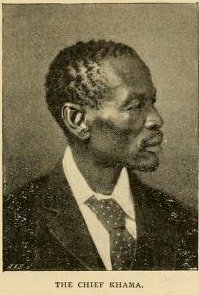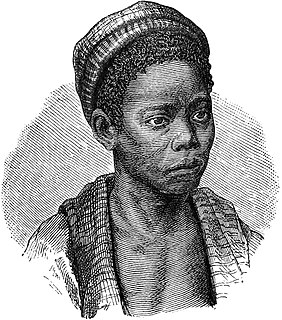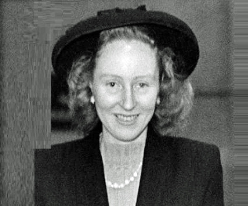Contents
This article includes a list of references, related reading or external links, but its sources remain unclear because it lacks inline citations .(October 2019) |
This is a list of museums in Botswana .
This article includes a list of references, related reading or external links, but its sources remain unclear because it lacks inline citations .(October 2019) |
This is a list of museums in Botswana .

Khama III (1837?–1923), referred to by missionaries as Khama the Good also called Khama the Great, was the Kgosi of the Bangwato people.

The Tswana are a Bantu-speaking ethnic group who are native to Southern Africa. The Tswana language is a principal member of the Sotho-Tswana language group. Ethnic Tswana made up approximately 85% of the population of Botswana in 2011.

Sir Seretse Goitsebeng Maphiri Khama, GCB, KBE was a Botswana politician who served as the first President of Botswana, a post he held from 1966 to his death in 1980.

The Bechuanaland Protectorate was a protectorate established on 31 March 1885, by the United Kingdom of Great Britain and Ireland in Southern Africa. It became the Republic of Botswana on 30 September 1966.
Serowe is an urban village in Botswana's Central District. A trade and commercial centre, it is Botswana's largest village. Serowe has played an important role in Botswana's history, as capital for the Bamangwato people in the early 20th century and as birthplace of several of Botswana's presidents. More recently it has undergone significant development as the town and Botswana continue to grow.
Palapye is a growing town in Botswana, situated about halfway between Francistown and Gaborone. Over the years its position has made it a convenient stopover on one of Southern Africa's principal north–south rail and road routes.

Ruth Williams Khama, Lady Khama was the wife of Botswana's first president Sir Seretse Khama, the Paramount Chief of its Bamangwato tribe. She served as the inaugural First Lady of Botswana from 1966 to 1980.
The Bamangwato is one of the eight "principal" Tswana chieftaincies of Botswana. They ruled over a majority Bakalanga population, with minorities including the Basarwa, Birwa and Tswapong. The modern Bamangwato formed in the Central District, with its main town and capital at Serowe. The paramount chief, a hereditary position, occupies one of the fifteen places in Ntlo ya Dikgosi, the national House of Chiefs.
Shoshong is a town in Botswana, formerly the chief settlement of the eastern Bamangwato.

The Sotho-Tswana peoples are a meta-ethnicity of southern Africa and live predominantly in Botswana, South Africa and Lesotho. The group mainly consists of three clasters; Southern Sotho (Sotho), Northern Sotho ( Tswana). A fourth claster is sometimes referred to as the Eastern Sotho, and consists of the Pulana, Makgolokwe/Bakholokoe the Pai and others.
Khama is the name of the royal family of the Bamangwato people of Botswana. As such, it may refer to:
Mabolwe is a village in the Central District of Botswana that is located in the eastern tip of the country's border with Zimbabwe. As of 2019, the village has a single primary school, and 30 out of the 3,000 residents are employed.

Seretse Khama Ian Khama is a Motswana politician and former military officer who was the fourth President of the Republic of Botswana from 1 April 2008 to 1 April 2018. After serving as Commander of the Botswana Defence Force, he entered politics and was Vice-President of Botswana from 1998 to 2008, then succeeded Festus Mogae as President on 1 April 2008. He won a full term in the 2009 election and was re-elected in October 2014.

Leruo Tshekedi Molotlegi is the 36th kgosi, or king, of the Royal Bafokeng Nation. The Bafokeng nation is located in North West Province of the Republic of South Africa.
The history of Gaborone began with archaeological evidence in the area around Gaborone dating back to 400 BCE, and the first written accounts of Gaborone are from the earliest European settlers in the 19th century. Since the 1960s, when Botswana gained its independence from Britain and Gaborone became the capital, the city has grown from a small village in the Botswana scrubland to a major center in southern Africa.
The Battle of Dimawe was fought between several Batswana tribes and the Boers in August 1852. Under the command of Kgosi Setshele I of the Bakwena tribe, the Batswana were victorious at Dimawe Hill.

Sebele I was a chief (kgosi) of the Kwena —a major Tswana tribe (morafe) in modern-day Botswana— who ruled from 1892 until his death in 1911. During his lifetime, he resisted the 1885 Bechuanaland Protectorate as well as the control of his domains by Cecil Rhodes' British South African Company, which was administering, by a royal charter signed in October 1889, his homeland in the Bechuanaland Protectorate and other regions of Central Africa.
Pilikwe is a rural village in Central District in Botswana. It was founded by Kgosi Tshekedi Khama of Bangwato. The current chief of the village is Kgosi Gasebalwe Seretse. The village is also known by the native name 'Rametsana'. It located 10 km east from the Martin's Drift tswapong highway and 32 km north-eastern from Radisele. The village is bordered by a hill on its northside.
Old Palapye is a heritage site located in Botswana, near a town called Palapye. Old Palapye and Palapye are two different places according to the residents there, Palapye is a modernised town. The site is located 20 km away from the Palapye town and the people living around call it Malaka village This monument site is called Old Palapye because it carries the history of the ancient nature which differentiates it from the Palapye town.
Bathoen I was a kgosi of the Ngwaketse people (1889-1910). Together with Khama III and Sebele I he is credited with saving the young British Bechuanaland Protectorate, a predecessor of Botswana, from being absorbed by expansionist forces in the 1890s.